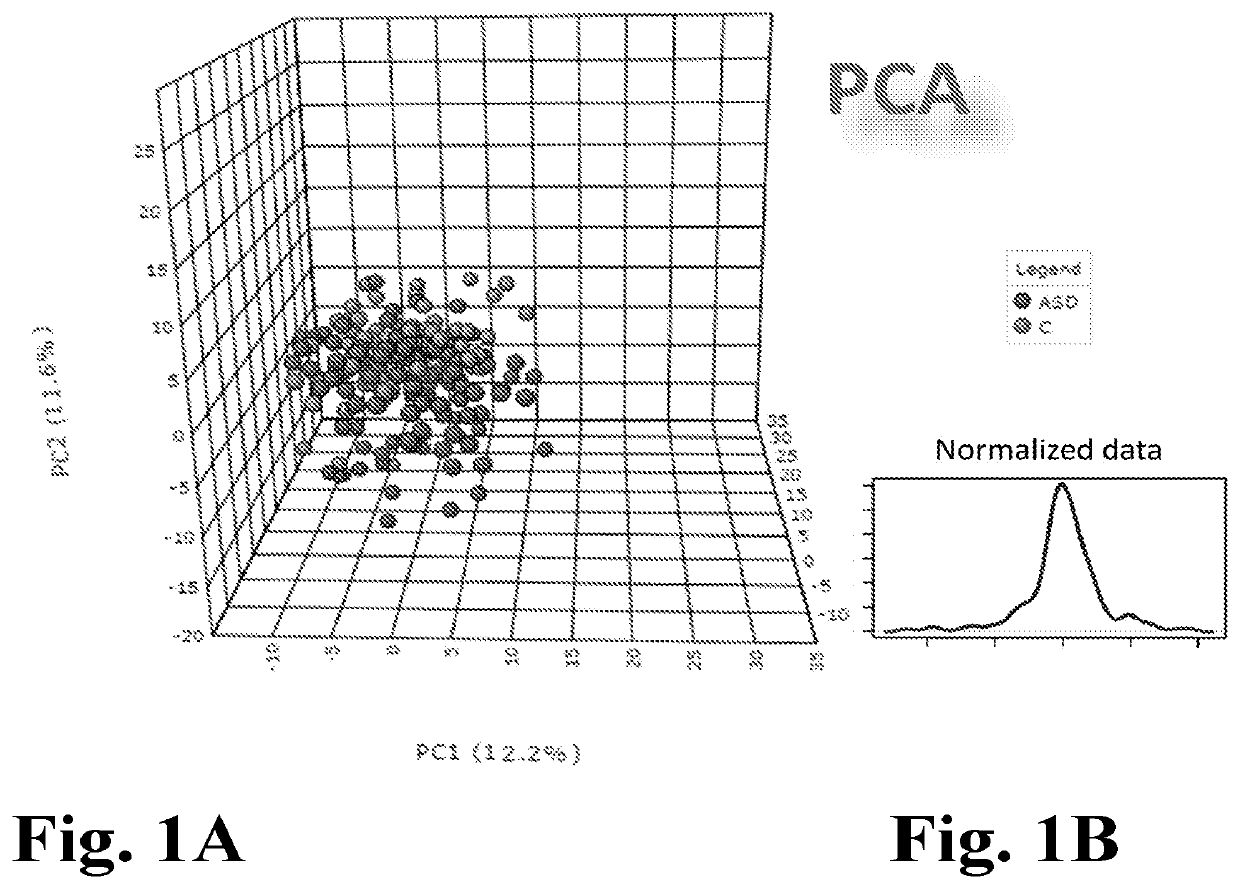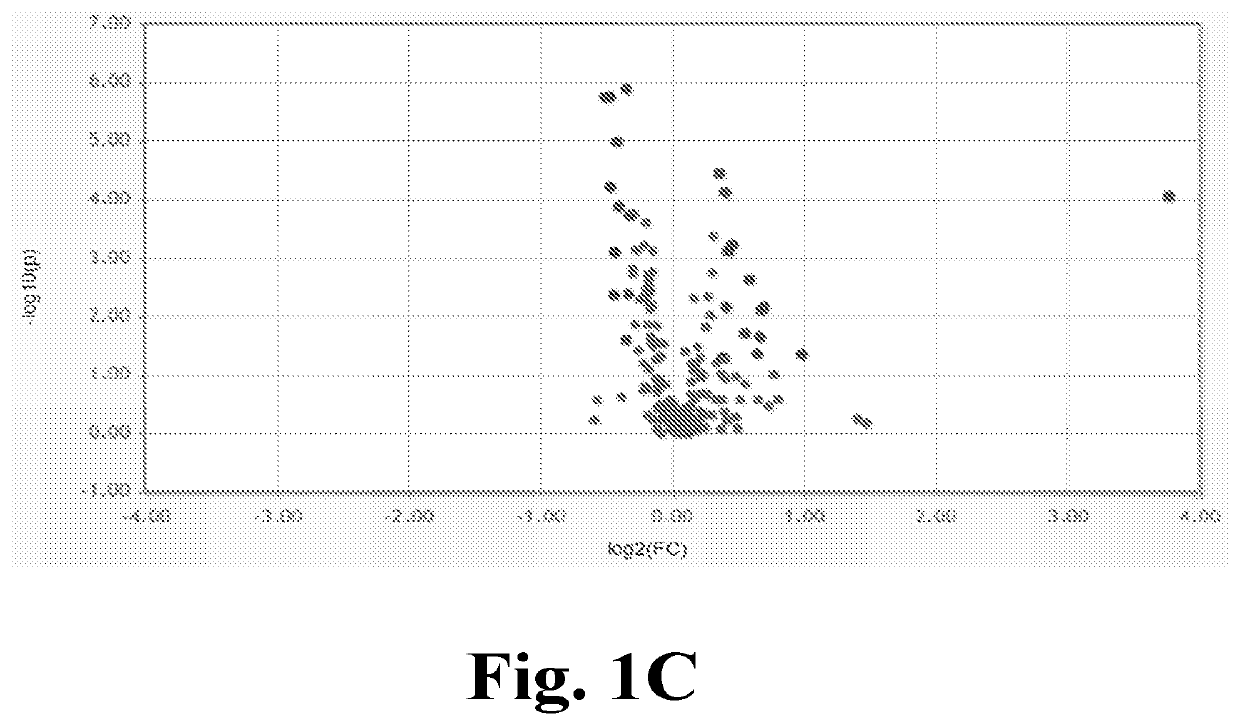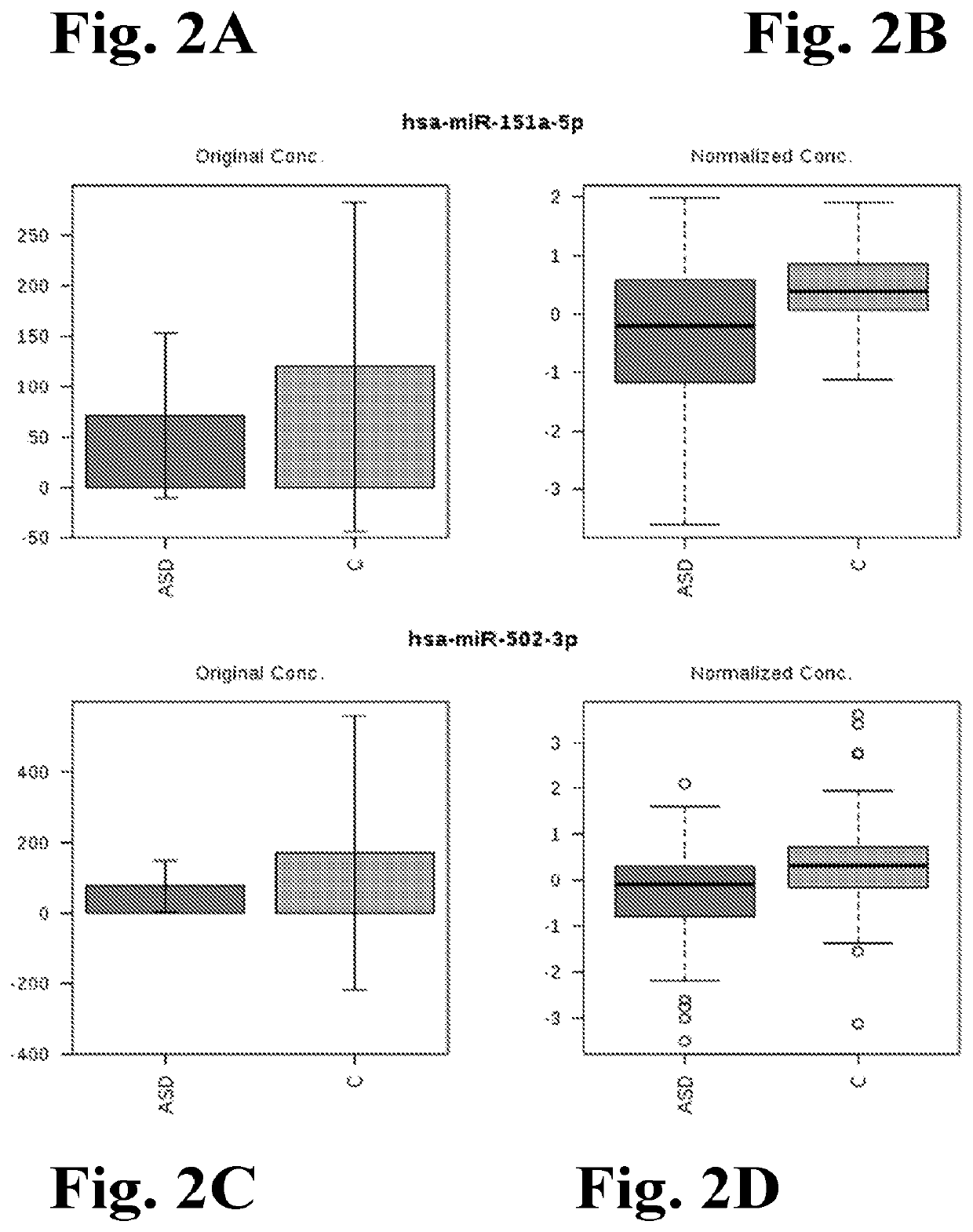Analysis of autism spectrum disorder
a technology for autism spectrum disorder and analysis, applied in the field of autism spectrum disorder evaluation, can solve the problems of only useful, lack of specificity, and difficulty, and achieve the effect of rapid, accurate and objective screening, and greatest degree of circadian fluctuation
- Summary
- Abstract
- Description
- Claims
- Application Information
AI Technical Summary
Benefits of technology
Problems solved by technology
Method used
Image
Examples
example 1
[0292]An objective of this study was, among others, to determine how well differences in salivary miRNA can distinguish ASD and NS children, to determine how well differences in the oral microbiome can distinguish ASD and NS children, to quantify the strength of the relationship between the miRNAs and microbiome, and to examine the functional consequences of the top findings.
Methods
Subjects
[0293]Parental consent was obtained for all subjects. A total of 258 samples were collected from children aged 2-6, with either a confirmed ASD diagnosis, a diagnosis of Developmental Delay (DD) or Typically Developing (DD) Healthy Controls. Comprehensive medical and demographic information was obtained using detailed questionnaires, the Vineland Adaptive Behavior Scales (2nd Edition), and the Autism Diagnostic Observation Schedule (2nd Edition).
TABLE 1HeightWeightCollectionAllergies / Eczema / GroupNMF% MAgeSleepDx%%TimeAsthmaAtopiaGI DXASD1221091389%4.135(28.7%)62.863.012:17PM35 (34.3%)11(10.8%)10(9...
example 2
[0301]It was hypothesized that differential expression of brain-related miRNA may be detected in the saliva of ASD subjects, predictive of ASD classification, and related to neurodevelopmental measures of adaptive behavior. This could result in a rapid, simple, non-invasive ASD diagnostic. In a pilot study testing this hypothesis, miRNAs differently expressed in ASD patients, compared with age- and sex-matched controls, were discovered.
[0302]It was further found that these miRNAs were expressed in developing brain and functionally related to neurodevelopment.
[0303]In addition to the presence of miRNAs in saliva, the inventors have ascertained that a considerable portion of the RNA in saliva samples was, in fact, not of human origin. After further investigation, this finding enabled to determine that the salivary RNA NGS data could be reliably mined to fully characterize the complete salivary microtranscriptome, which comprises miRNA and microbiome elements, including host miRNA and ...
example 3
[0314]An example in which a larger sample size, comprised of ASD, DD, and TD children, was used, with methods similar to that above. The sample size was 400, to yield a power of approximately 94% for a three group classification test (see FIG. 21 A-B).
PUM
| Property | Measurement | Unit |
|---|---|---|
| Fraction | aaaaa | aaaaa |
| Fraction | aaaaa | aaaaa |
| Fraction | aaaaa | aaaaa |
Abstract
Description
Claims
Application Information
 Login to View More
Login to View More - R&D
- Intellectual Property
- Life Sciences
- Materials
- Tech Scout
- Unparalleled Data Quality
- Higher Quality Content
- 60% Fewer Hallucinations
Browse by: Latest US Patents, China's latest patents, Technical Efficacy Thesaurus, Application Domain, Technology Topic, Popular Technical Reports.
© 2025 PatSnap. All rights reserved.Legal|Privacy policy|Modern Slavery Act Transparency Statement|Sitemap|About US| Contact US: help@patsnap.com



